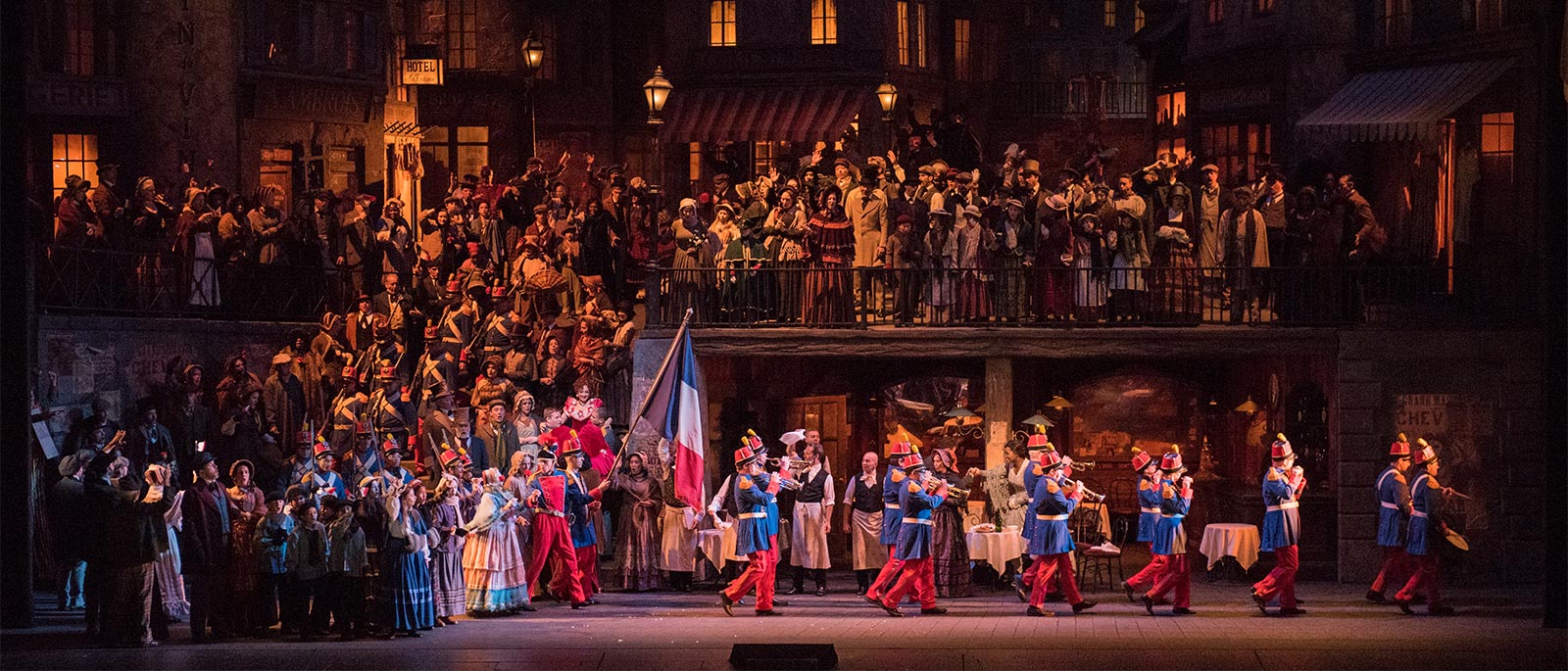
La Bohème
Art, music, poetry, love: a group of young bohemians had it all—until the icy hand of death came between them. To outsiders, bohemian Paris seemed an exotic and extravagant realm where passing romances, raucous parties, and an idealistic devotion to art reigned supreme. That the so-called “bohemian revolutionaries” who lived there had chosen to forego the creature comforts of bourgeois life only made them appear more romantic. For the denizens of the Left Bank, however, bohemian bonhomie had a distinctly bleaker aspect: Debt, deprivation, and the diseases of urban squalor lurked behind their apparently festive life. For the young Italian composer Giacomo Puccini—himself no stranger to the financial struggles of young artists—it was this very clash of joie de vivre and abject poverty that made the bohemian world ideally suited to opera. For generations of opera lovers ever since, Puccini’s glorious masterwork La Bohème has brought the bohemian world to life.
From its earliest days, La Bohème was a smashing success. “Men die and governments change,” the American inventor Thomas Edison wrote to Puccini in 1920, “but the songs of La Bohème will live forever.” Almost a century later, it seems that Edison was right. The characters and songs of La Bohème have inspired Oscar-winning films ranging from Moonstruck to Moulin Rouge. The heartrending story also became the hit Broadway musical Rent, updated to reflect the ills of the late 20th century. And, to this day, La Bohème is the most performed opera in the history of the Met, where Franco Zeffirelli’s picturesque production embodies both the monumental grandeur and quiet intimacy of Puccini’s masterwork.
This guide delves into the history and context of La Bohème, one of the most popular operas of all time. The following pages include biographical details about the composer, information on the opera’s source and creation, and a guided listening exercise to bring the opera into the classroom. Although your students may not be familiar with Puccini’s music, the opera’s plot, or even operatic performance in general, they will likely recognize many of the themes and ideas presented in this masterwork. The information on the following pages is designed to provide context, deepen background knowledge, and enrich the overall experience of attending a final dress rehearsal at the Metropolitan Opera.